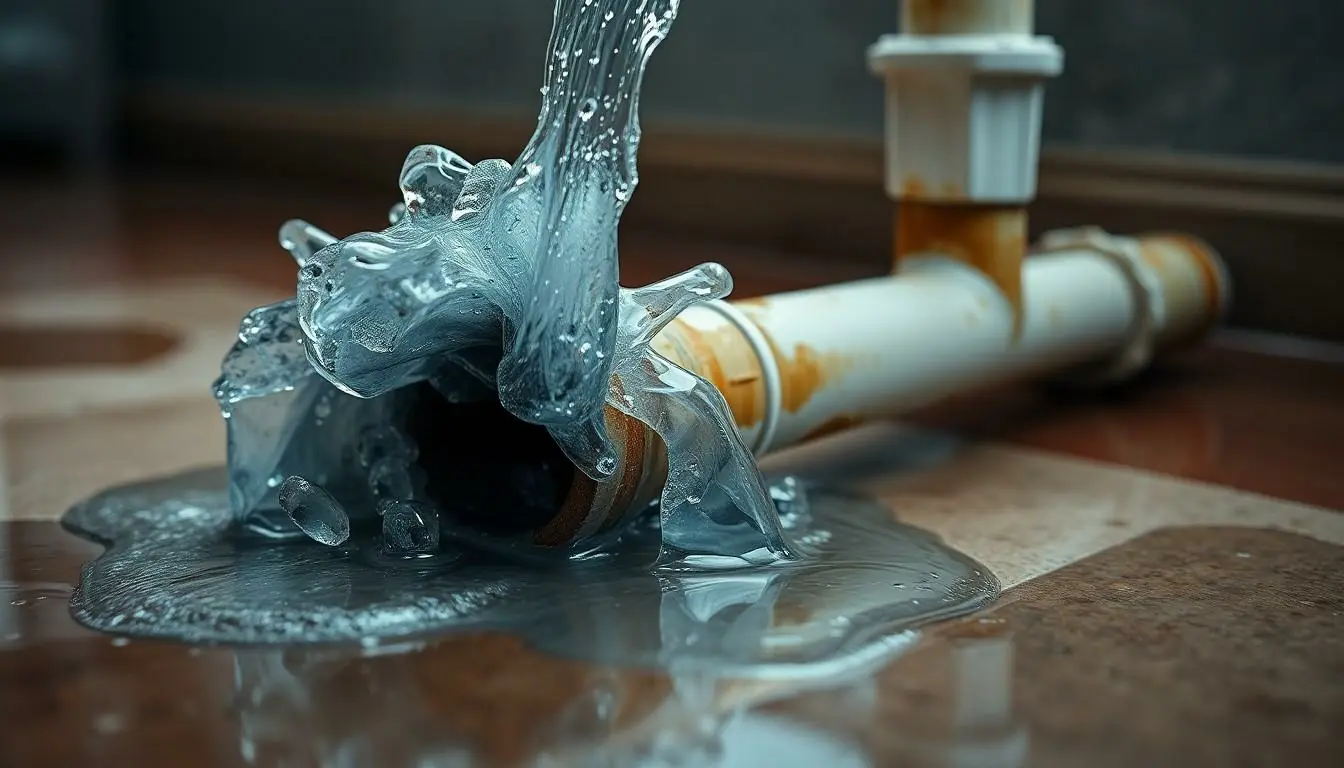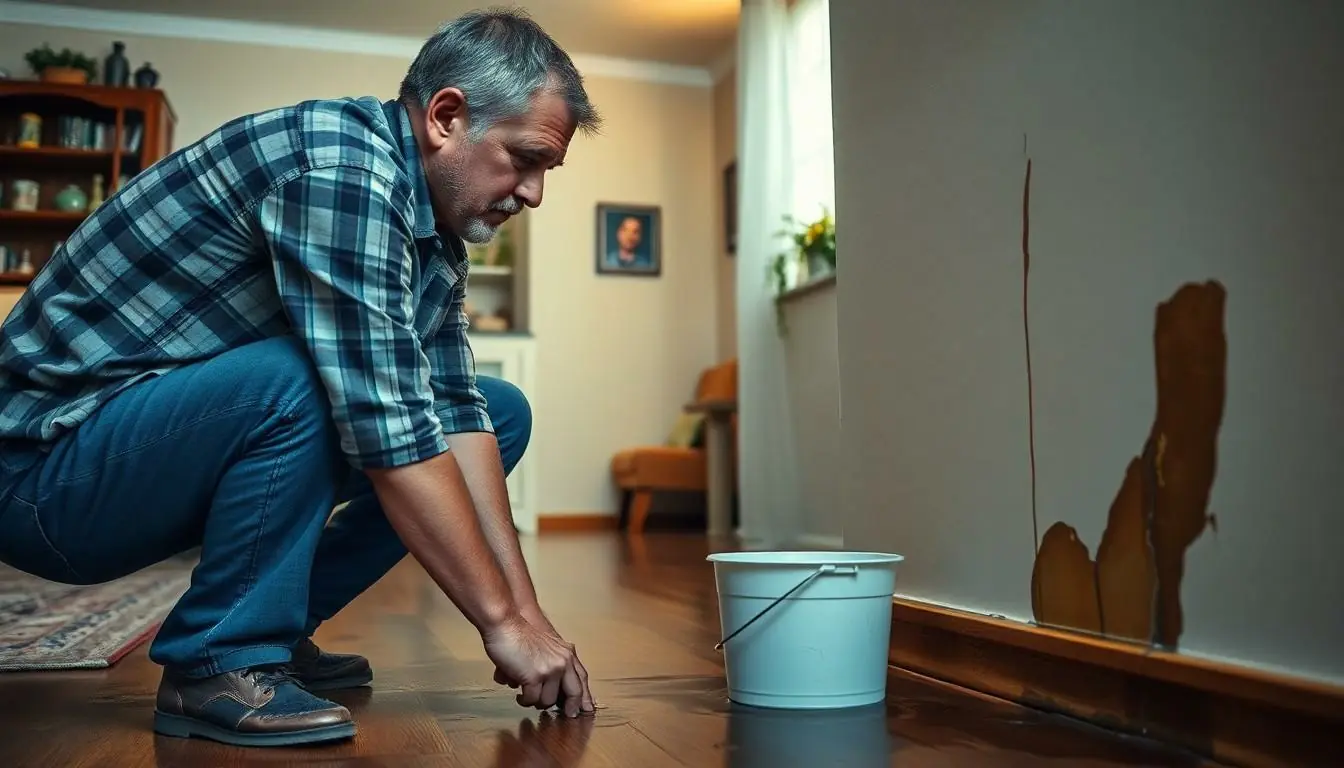Water leaks can be a homeowner’s worst nightmare. One minute you’re enjoying your cozy living room, and the next, you’re wading through an indoor pool that would make Neptune jealous. But before you start building an ark, it’s essential to know if your home insurance has your back or if you’re left high and dry.
Understanding whether home insurance covers water leaks can save you from drowning in unexpected costs. Not all policies are created equal, and what might seem like a small drip could lead to a big financial splash. So grab a towel and dive into the details—because knowing what your insurance covers could mean the difference between a minor inconvenience and a major disaster.
Table of Contents
ToggleUnderstanding Home Insurance
Home insurance provides essential protection for property owners, but coverage varies significantly. Many policies cover damages resulting from water leaks, yet specifics can differ. Policies typically include protection for sudden and accidental water damage, like a burst pipe. It’s crucial for homeowners to read their policy documents carefully.
Some types of water damage aren’t covered, such as gradual leaks or flooding. A homeowner may find that slow leaks over time fall under maintenance issues. Understanding the distinction between types of water damage ensures informed decisions can be made.
In addition to standard coverage, homeowners can opt for endorsements. Endorsements may provide extra protection for scenarios not covered by basic policies, like sewer backup. They add a layer of security against certain water-related claims.
Homeowners must contact their insurance providers to clarify what their policy covers. Specific exclusions may apply, so it’s important to ask direct questions. Reviewing coverage options annually can help homeowners stay informed of any changes.
Ultimately, being proactive about understanding home insurance leads to better financial outcomes. Knowledge about coverage specifics can assist in preventing costly surprises during a claim process. It helps homeowners avoid confusion when unexpected leaks arise, ensuring they receive the appropriate assistance.
Types of Water Leaks

Understanding various types of water leaks helps homeowners navigate insurance coverage effectively. Each type presents different challenges and implications for insurance claims.
Burst Pipes
Burst pipes often occur in freezing conditions or when pipes corrode. When pressure builds up due to obstructions, it can lead to sudden ruptures, resulting in significant water damage. Most home insurance policies cover damages caused by burst pipes, as this scenario falls under sudden and accidental incidents. Homeowners typically need to demonstrate that the burst was not due to neglect or lack of maintenance. Prompt action prevents further damage and strengthens claims.
Plumbing Failures
Plumbing failures include problems arising from faulty plumbing systems, such as broken fixtures or incorrect installations. These issues often develop gradually, leading to leaks that may not be immediately apparent. Coverage for plumbing failures varies widely among insurance policies. Many policies exclude gradual leaks, considering these maintenance issues rather than sudden damage. Homeowners should confirm their specific coverage options for plumbing-related incidents and consider purchasing additional endorsements. Regular maintenance checks promote awareness of potential failures.
Roof Leaks
Roof leaks generally occur due to age, storm damage, or improper installation. Damaged shingles or flashing can cause moisture intrusion, leading to internal damage over time. Homeowners must document any signs of a leak, such as water stains or mildew, when filing claims. Insurance coverage often extends to sudden roof leaks caused by specific perils like storms. However, gradual leakage due to lack of upkeep frequently falls outside policy coverage. Evaluating the roof’s condition and keeping records helps in understanding potential claims related to roof leaks.
Home Insurance Policies
Understanding the nuances of home insurance policies is essential for homeowners. Specific coverage can vary, so examining the details of each policy is crucial.
What They Typically Cover
Home insurance typically covers sudden and accidental water damage. Examples include damages from burst pipes or a malfunctioning water heater. Policies usually address these incidents under dwelling coverage. Coverage extends to personal property if water damage occurs. Homeowners may also find that additional structures on their property receive protection. Such policies often encompass emergency mitigation services, like water extraction and drying, to minimize further damage.
Common Exclusions
However, homeowners should be aware of common exclusions in policies. Gradual leaks, like those from a slow roof leak, usually aren’t covered. Flood damage often requires separate flood insurance, as most home insurance policies exclude it. Maintenance-related issues, such as corrosion or rust, might also fall outside coverage. Neglecting home maintenance can lead to problems that insurance won’t address. Homeowners should review their policies thoroughly to recognize these exclusions. Exploring endorsements can provide additional protection for gaps in coverage.
Does Home Insurance Cover Water Leaks?
Home insurance coverage for water leaks varies significantly depending on the policy specifics. Knowing the details can prevent unexpected expenses.
Conditions for Coverage
For coverage, water damage usually must be sudden and accidental. Burst pipes often fall under this category, making them typically covered. Gradual leaks, however, don’t usually receive the same treatment. Many policies exclude damages caused by regular maintenance issues, requiring homeowners to verify their policy terms. Seeking endorsements can enhance protection against specific scenarios, such as sewer backups or plumbing failures. Homeowners should remember that age-related roof leaks may qualify for coverage if they occur suddenly. Understanding these coverage conditions is essential for effective claims.
How to File a Claim
Filing a claim involves several key steps to ensure timely processing. First, homeowners should document the extent of the water damage through photos or videos. Next, notifying the insurance provider as soon as possible is crucial, as policies often require quick reporting of incidents. During the claim process, individuals must provide documentation of repairs and any related expenses. An adjuster may visit the property to assess the damage firsthand. Keeping detailed records of communication with the insurance company aids in maintaining transparency throughout the process. Following these steps enhances the chances of a successful claim outcome.
Preventing Water Damage
Regular maintenance significantly reduces the risk of water damage. Homeowners must inspect pipes for leaks or corrosion at least annually. Identify potential issues early through routine checks.
Properly sealing windows and doors prevents moisture intrusion during storms. Maintaining gutters and downspouts ensures effective water drainage from the roof.
Installing water alarms in vulnerable areas can alert homeowners to leaks immediately. These alarms prompt swift action, reducing damage.
Utilizing high-quality plumbing materials helps prevent issues. Copper or PEX pipes often last longer than traditional materials. Selecting durable water heaters also minimizes the risk of leaks.
Knowing where the main shut-off valve is located allows for quick action during emergencies. In case of sudden pipe bursts, turning off the water supply minimizes damage immediately.
Regular inspections of the roof can identify vulnerabilities. Look for missing shingles or signs of wear and tear. Addressing these problems promptly can prevent leaks during heavy rainfall.
Winterizing plumbing systems is vital, especially in colder climates. Insulating pipes reduces the risk of frozen and burst pipes. Homeowners can also let faucets drip during extreme cold to prevent freezing.
Conducting a thorough cleaning of the sump pump ensures proper functionality. Testing these pumps periodically maintains their effectiveness during heavy rains.
Engaging professional services for major plumbing works guarantees proper installation. Certified plumbers ensure that systems adhere to local codes, reducing risks of future leaks.
With proactive measures, homeowners can significantly decrease the likelihood of water damage, protecting their properties and maintaining insurance coverage.
Understanding home insurance coverage for water leaks is essential for every homeowner. By knowing the specifics of their policy and the types of water damage covered, they can better prepare for unexpected incidents. It’s crucial to recognize the differences between sudden and gradual leaks and to consider additional endorsements for comprehensive protection.
Regular maintenance and proactive measures can further minimize the risk of water damage. Homeowners should stay informed about their coverage and review their policies annually to adapt to any changes. This knowledge not only helps in filing claims efficiently but also protects their financial well-being in the long run.



